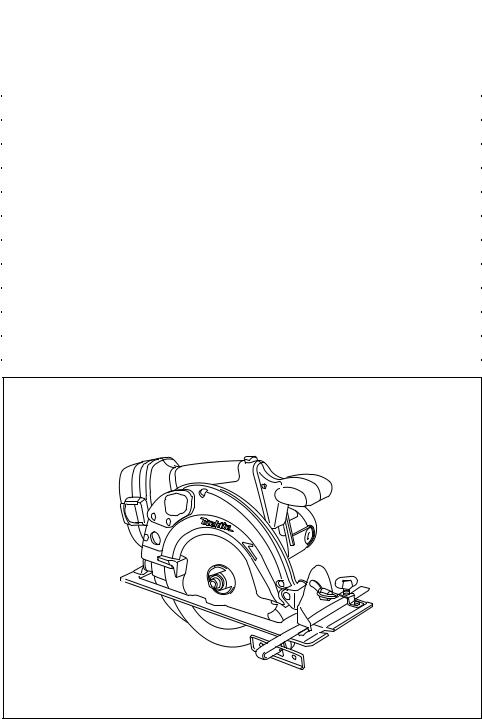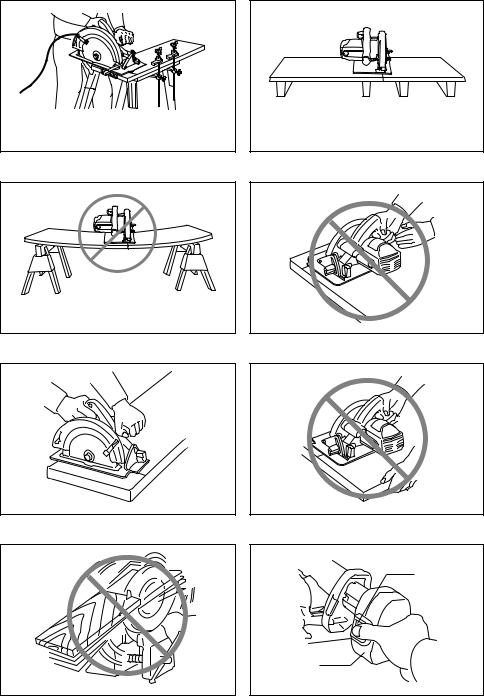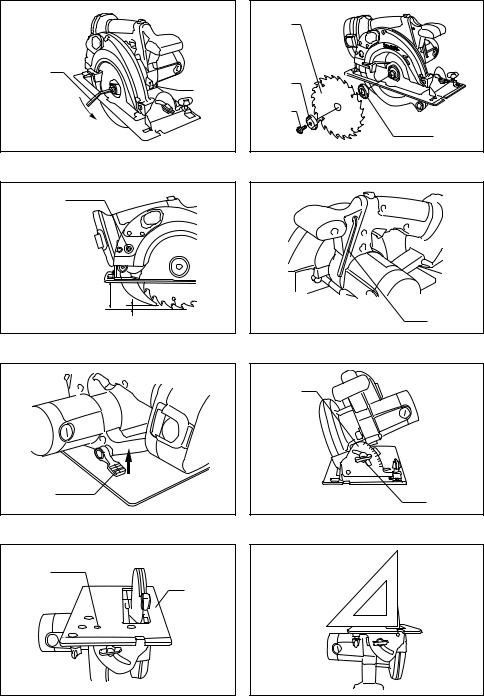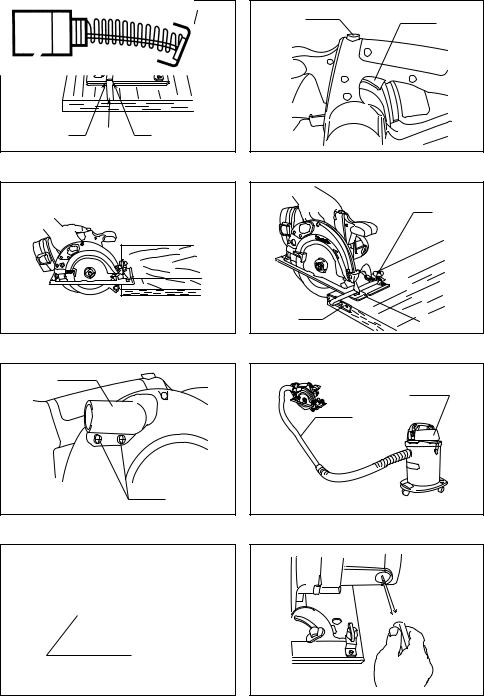Makita 5621RD Manual

|
|
|
|
|
|
|
|
|
|
|
GB |
Cordless Circular Saw |
Instruction Manual |
|
|
|
|
|
|
|
|
Scie circulaire sans fil |
Manuel d’instructions |
|
|
F |
|||
|
|
|
|
|
|
|
Akku-Handkreissäge |
Betriebsanleitung |
|
|
D |
|||
|
|
|
|
|
|
|
Sega circolare a batteria |
Istruzioni per l’uso |
|
|
I |
|||
|
|
|
|
|
|
|
Accu cirkelzaag |
Gebruiksaanwijzing |
|
|
NL |
|||
|
|
|
|
|
|
|
Sierra circular a batería |
Manual de instrucciones |
|
|
E |
|||
|
|
|
|
|
|
|
Serra circular a bateria |
Manual de instruções |
|
|
P |
|||
|
|
|
|
|
|
|
Akku rundsav |
Brugsanvisning |
|
|
DK |
|||
|
|
|
|
|
|
|
Sladdlös cirkelsåg |
Bruksanvisning |
|
|
S |
|||
|
|
|
|
|
|
|
Akku sirkelsag |
Bruksanvisning |
|
|
N |
|||
|
|
|
|
|
|
|
Akkukäyttöinen pyörösaha |
Käyttöohje |
|
|
FIN |
|||
|
|
|
|
|
|
|
Ασύρµατ δισκ πρί ν |
δηγίες ρήσεως |
|
|
GR |
|||
|
|
|
|
|
5621RD

|
1 |
2 |
|
|
|
1 |
|
2 |
3
3
5
7
2
4
6
4
5
8

7 |
|
|
8 |
6 |
|
9 |
|
13 |
|
14 |
1-5 mm |
|
1-5 mm |
11 |
|
15 |
|
13 |
|
18 |
|
|
19 |
15 |
|
11
10
9
12
10
7
12
16
17
14
20 
16
3

21 22 23
17
19
28
29
21
32
23
4
25 |
24 |
|
18
26
27
20
31
30
22
 33
33  34
34
24

ENGLISH
Explanation of general view
1 |
A typical illustration of proper |
9 |
Bolt |
22 |
Cutting line |
|
hand support, workpiece sup- |
10 |
Outer flange |
23 |
For 45° bevel cuts |
|
port, and supply cord routing (if |
11 |
Saw blade |
24 |
Switch trigger |
|
applicable). |
12 |
Inner flange |
25 |
Lock-off button |
2 |
To avoid kickback, do support |
13 |
Hex socket head bolt |
26 |
Clamp screw |
|
board or panel near the cut. |
14 |
Cutting depth |
27 |
Rip fence (Guide rule) |
3 |
Don’t support board or panel |
15 |
Lever |
28 |
Dust nozzle |
|
away from the cut. |
16 |
Bevel scale plate |
29 |
Screws |
4 |
Push button |
17 |
Clamp screw |
30 |
Hose 28 mm in inner dia. |
5 |
Battery cartridge |
18 |
Adjusting screw |
31 |
Vacuum cleaner |
6 |
Loosen (counterclockwise) |
19 |
Base |
32 |
Limit mark |
7 |
Hex wrench |
20 |
Triangular rule |
33 |
Brush holder cap |
8 |
Shaft lock |
21 |
For straight cuts |
34 |
Screwdriver |
SPECIFICATIONS
Model |
5621RD |
Blade diameter ................................................... |
165 mm |
Max. cutting depth |
|
At 90° ................................................................. |
54 mm |
At 45° ................................................................. |
38 mm |
No load speed (min-1) ............................................. |
2,600 |
Overall length ..................................................... |
364 mm |
Net weight .............................................................. |
3.8 kg |
Rated voltage .................................................... |
D.C.18 V |
•Due to our continuing program of research and development, the specifications herein are subject to change without notice.
•Note: Specifications may differ from country to country.
Intended use
The tool is intended for performing lengthways and crossways straight cuts and mitre cuts with angles in wood while in firm contact with the workpiece.
Safety hints
For your own safety, please refer to the enclosed safety instructions.
IMPORTANT SAFETY INSTRUCTIONS FOR CHARGER & BATTERY CARTRIDGE
ENC004-1
1.Before using battery cartridge, read all instructions and cautionary markings on (1) battery charger, (2) battery, and (3) product using battery.
2.Do not disassemble battery cartridge.
3.If operating time has become excessively shorter, stop operating immediately. It may result in a risk of overheating, possible burns and even an explosion.
4.If electrolyte gets into your eyes, rinse them out with clear water and seek medical attention right away. It may result in loss of your eyesight.
5.Always cover the battery terminals with the battery cover when the battery cartridge is not used.
6.Do not short the battery cartridge:
(1)Do not touch the terminals with any conductive material.
(2)Avoid storing battery cartridge in a container with other metal objects such as nails, coins, etc.
(3) Do not expose battery cartridge to water or rain.
A battery short can cause a large current flow, overheating, possible burns and even a breakdown.
7.Do not store the tool and battery cartridge in locations where the temperature may reach or exceed 50°C (122°F).
8.Do not incinerate the battery cartridge even if it is severely damaged or is completely worn out. The battery cartridge can explode in a fire.
9.Be careful not to drop or strike battery.
SAVE THESE INSTRUCTIONS.
Tips for maintaining maximum battery life
1.Charge the battery cartridge before completely discharged.
Always stop tool operation and charge the battery cartridge when you notice less tool power.
2.Never recharge a fully charged battery cartridge. Overcharging shortens the battery service life.
3.Charge the battery cartridge with room temperature at 10°C – 40°C (50°F – 104°F). Let a hot battery cartridge cool down before charging it.
4.Charge the Nickel Metal Hydride battery cartridge when you do not use it for more than six months.
SPECIFIC SAFETY RULES
GEB029-1
DO NOT let comfort or familiarity with product (gained from repeated use) replace strict adherence to circular saw safety rules. If you use this tool unsafely or incorrectly, you can suffer serious personal injury.
Danger:
1.Keep hands away from cutting area and the blade. Keep your second hand on auxiliary handle, or motor housing. If both hands are holding the saw, they cannot be cut by the blade.
2.Do not reach underneath the workpiece. The guard cannot protect you from the blade below the workpiece. Do not attempt to remove cut material when blade is moving.
CAUTION: Blades coast after turn off. Wait until blade stops before grasping cut material.
5
3.Adjust the cutting depth to the thickness of the workpiece. Less than a full tooth of the blade teeth should be visible below the workpiece.
4.Never hold piece being cut in your hands or across your leg. Secure the workpiece to stable platform. It is important to support the work properly to minimize body exposure, blade binding, or loss of control. (Fig. 1)
5.Hold power tool by insulated gripping surfaces when performing an operation where the cutting tool may contact hidden wiring or its own cord.
Contact with a “live” wire will also make exposed metal parts of the power tool “live” and shock the operator.
6.When ripping always use a rip fence or straight edge guide. This improves the accuracy cut and reduces the chance of blade binding.
7.Always use blades with correct size and shape (diamond versus round) of arbour holes. Blades that do not match the mounting hardware of the saw will run eccentrically, causing loss of control.
8.Never use damaged or incorrect blade washers or bolt. The blade washers and bolt were specially designed for your saw, for optimum performance and safety of operation.
9.Causes and Operator Prevention of Kickback:
–kickback is a sudden reaction to a pinched, bound or misaligned saw blade, causing an uncontrolled saw to lift up and out of the workpiece toward the operator;
–when the blade is pinched or bound tightly by the kerf closing down, the blade stalls and the motor reaction drives the unit rapidly back toward the operator;
–if the blade becomes twisted or misaligned in the cut, the teeth at the back edge of the blade can dig into the top surface of the wood causing the blade to climb out of the kerf and jump back toward the operator.
Kickback is the result of saw misuse and/or incorrect operating procedures or conditions and can be avoided by taking proper precautions as given below.
•Maintain a firm grip with both hands on the saw and position your arms to resist kickback forces. Position your body to either side of the blade, but not in line with the blade. Kickback could cause the saw to jump backwards, but kickback forces can be controlled by the operator, if proper precautions are taken.
•When blade is binding, or when interrupting a cut for any reason, release the trigger and hold the saw motionless in the material until the blade comes to a complete stop. Never attempt to remove the saw from the work or pull the saw backward while the blade is in motion or kickback may occur. Investigate and take corrective actions to eliminate the cause of blade binding.
•When restarting a saw in the workpiece, centre the saw blade in the kerf and check that saw teeth are not engaged into the material. If saw blade is binding, it may walk up or kickback from the workpiece as the saw is restarted.
•Support large panels to minimise the risk of blade pinching and kickback. Large panels tend to sag under their own weight. Supports must be placed under the panel on both sides, near the line of cut and near the edge of the panel.
•To minimize the risk of blade pinching and kickback. When cutting operation requires the resting of the saw on the workpiece, the saw should be rested on the larger portion and the smaller piece cut off. (Fig. 2 & 3)
•Do not use dull or damaged blades. Unsharpened or improperly set blades produce narrow kerf causing excessive friction, blade binding and kickback. Keep blade sharp and clean. Gum and wood pitch hardened on blades slows saw and increases potential for kickback. Keep blade clean by first removing it from tool, then cleaning it with gum and pitch remover, hot water or kerosene. Never use gasoline.
•Blade depth and bevel adjusting locking levers must be tight and secure before making cut. If blade adjustment shifts while cutting, it may cause binding and kickback.
•Use extra caution when making a “plunge cut” into existing walls or other blind areas. The protruding blade may cut objects that can cause kickback. For plunge cuts, retract lower guard using retracting handle.
•ALWAYS hold the tool firmly with both hands. NEVER place your hand or fingers behind the saw. If kickback occurs, the saw could easily jump backwards over your hand, leading to serious personal injury. (Fig. 4)
•Never force the saw. Forcing the saw can cause uneven cuts, loss of accuracy, and possible kickback. Push the saw forward at a speed so that the blade cuts without slowing.
10.Check lower guard for proper closing before each use. Do not operate the saw if lower guard does not move freely and close instantly. Never clamp or tie the lower guard into the open position. If saw is accidentally dropped, lower guard may be bent. Raise the lower guard with the retracting handle and make sure it moves freely and does not touch the blade or any other part, in all angles and depths of cut. To check lower guard, open lower guard by hand, then release and watch guard closure. Also check to see that retracting handle does not touch tool housing. Leaving blade exposed is VERY DANGEROUS and can lead to serious personal injury.
11.Check the operation of the lower guard spring. If the guard and the spring are not operating properly, they must be serviced before use. Lower guard may operate sluggishly due to damaged parts, gummy deposits, or a build-up of debris.
12.Lower guard should be retracted manually only for special cuts such as “plunge cuts” and “compound cuts.” Raise lower guard by retracting handle and as soon as blade enters the material, the lower guard must be released. For all other sawing, the lower guard should operate automatically.
6
